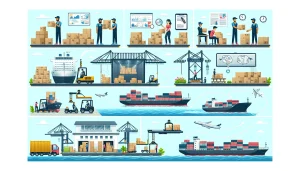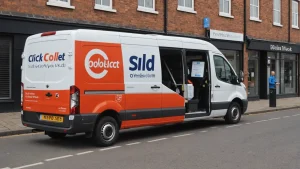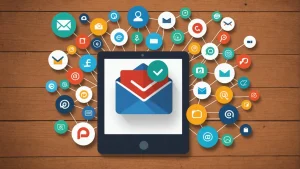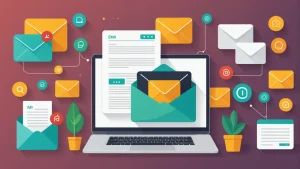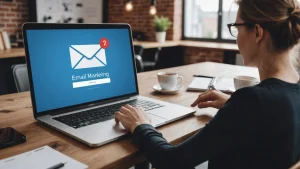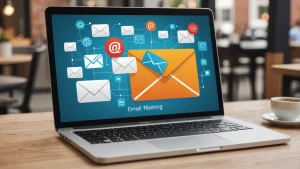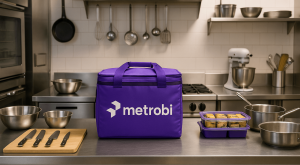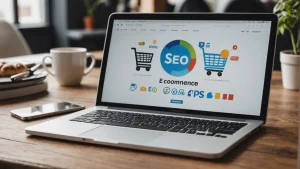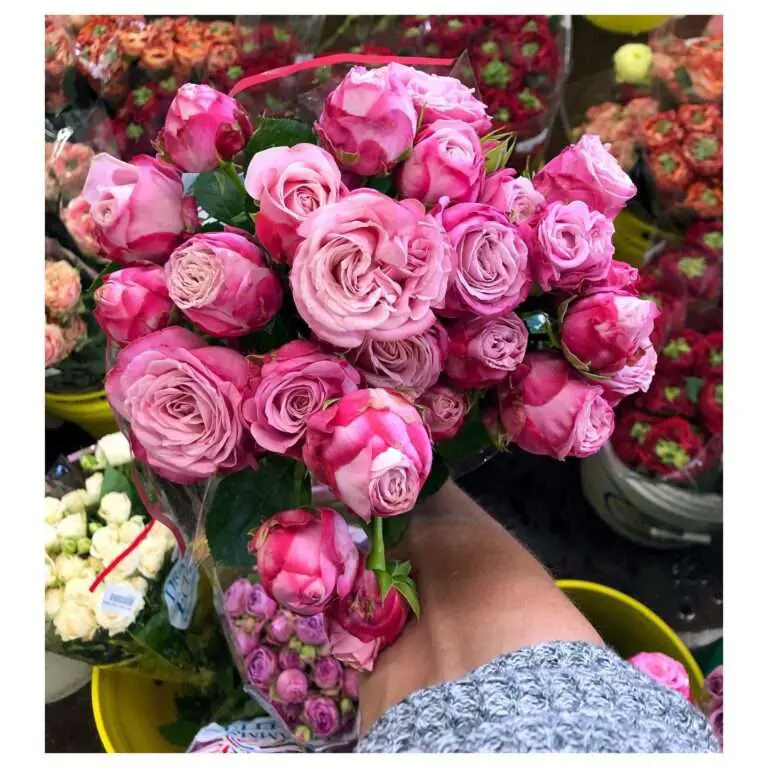Email marketing is one of the most powerful tools for small businesses aiming to engage customers, drive sales, and streamline operations. By using well-structured email templates for small businesses, owners can save time and ensure professionalism in every communication. From sending invoices and confirming appointments to welcoming new customers, business email templates offer a consistent way to communicate with clients. Discover the best services for email marketing aimed at small businesses to enhance your email communications and expand your client base effectively.
Whether you’re following up after a sale or sending a confirmation email template, choosing the right email template subject line is crucial to capturing your audience’s attention. A professional email template that reflects your brand, such as an invoice email template or customer feedback email template, not only makes communication efficient but also enhances the customer experience. In this guide, we’ve gathered some of the best business email templates, designed to help small business owners improve their customer relationships and streamline their day-to-day business operations. Seeking innovative local email marketing strategies for small enterprises? Explore our guide for impactful tactics to nurture your community relations and bolster your small business’s growth.
With a clear structure and professional language, these templates are designed to help you craft effective and personalized messages, whether it’s a sales email, follow-up email, or customer satisfaction email template. Let’s dive into the most popular email templates, providing you with valuable resources to maintain seamless communication.
Lower your delivery costs by 23%
How we reduce costs:
- No delivery vehicle expenses
- Optimized local routes
- Pay-per-delivery model
- Average 23% delivery cost reduction
20 Most Popular Email Templates for Small Businesses
1. Promotional Email
Promotional emails are one of the most widely used tools in email marketing, designed to drive sales, announce special offers, and encourage customer action. They can highlight limited-time discounts, new products, holiday promotions, or exclusive deals. For small businesses, promotional emails help engage current customers and attract new ones. These emails are typically short, visually appealing, and feature a compelling call-to-action (CTA) that directs the reader to make a purchase or take advantage of a deal. Enhance your small business’s promotional strategy by leveraging the power of small business email marketing, and discover essential tips for mastering your campaigns in 2024.
A strong promotional email balances urgency with value by emphasizing what the customer stands to gain, whether savings, access to exclusive content, or early product releases.
Pro Tip: Segment your email list based on customer behavior, past purchases, or demographics to ensure your promotion resonates with the right audience. Including dynamic content, such as personalized product recommendations, can boost engagement and conversion rates.
Promotional Email Template
Subject Line: Don’t Miss Out—Limited-Time 30% Off Just for You!
Body:
Dear [Customer's First Name],We know you love great deals, so we’re excited to offer you an exclusive 30% off on your next purchase!
For a limited time, enjoy savings on your favorite products at [Company Name]. Don’t wait too long—this offer ends soon!
[Shop Now] [Insert Link]
Plus, when you spend $50 or more, we’ll throw in free shipping—just another way to say thank you for being a loyal customer.
If you have any questions or need assistance, feel free to reach out to our team at [Contact Email].
Best regards,
[Your Name] / [Company Name] / [Insert Signature]
2. Welcome Email
A welcome email is the first point of contact after a customer subscribes to your mailing list or makes a purchase. It’s your opportunity to make a lasting first impression, introduce your brand, and provide key information on what to expect moving forward. The welcome email sets the stage for your relationship with the subscriber by offering a friendly greeting and valuable content like a discount, a free resource, or a guide on how to use your products or services. Small businesses can leverage welcome emails to build trust, loyalty, and customer engagement from the outset.
This email is particularly important as it tends to have higher open rates than regular emails, making it the perfect opportunity to deliver your value proposition and encourage further interaction with your brand.
Pro Tip: Include a special offer or a personalized discount to encourage immediate engagement. Make your CTA clear and prominent, guiding new subscribers to explore your website or a specific resource.

Welcome Email Template
Subject Line: Welcome to [Company Name]—Here’s a Special Offer Just for You!
Body:
Hi [Customer's First Name],Welcome to the [Company Name] family! We’re excited to have you on board. As a token of our appreciation, we’re giving you an exclusive [X%] off your next order!
Use code: WELCOME30 at checkout to redeem your discount.
In the meantime, here are a few things you can do to get started:
Browse our [most popular products] [Insert Link]
Read our [latest blog posts] [Insert Link] for tips and insights
Follow us on [Social Media Platform] to stay updated on new products and promotions
If you ever need anything, our customer service team is always here to help!
Best regards,
[Your Name] / [Company Name] / [Insert Signature]
3. Newsletter
A newsletter email keeps your customers informed about company updates, product launches, industry news, and helpful content. This type of email builds a steady relationship with your audience by providing consistent value in the form of curated articles, promotions, or upcoming events. Small business newsletters allow companies to stay top-of-mind with their audience while reinforcing their brand identity and providing a way to promote products in a non-salesy way.
It’s important for a newsletter to be concise but packed with useful information, often mixing promotional content with educational material to maintain reader interest.
Pro Tip: Include a variety of content types (e.g., articles, promotions, customer stories) to appeal to different segments of your audience. A “table of contents” at the top of the email allows recipients to quickly navigate to the sections they are most interested in.

Newsletter Email Template
Subject Line: September Updates—New Products, Tips, and Exclusive Discounts!
Body:
Dear [Customer's First Name],Welcome to our September newsletter! We’ve got exciting updates to share with you this month, including new product launches, expert tips, and a special offer just for you.
What’s New at [Company Name]:
Introducing Our New Fall Collection – Check out our latest arrivals in [Category] [Insert Link].
Customer Spotlight – Meet [Customer’s Name], one of our loyal customers who recently shared their success story with us [Insert Link].
Expert Tips for [Industry Topic] – Our latest blog post covers [Insert Topic], providing actionable advice to help you get more out of your [Products/Services] [Insert Link].
Exclusive Discount – As a newsletter subscriber, enjoy 10% off your next purchase with code SEPT10.
Thank you for being a part of our community! Stay tuned for more updates, and don’t hesitate to reach out if you have any questions or feedback.
Best regards,
[Your Name] / [Company Name] / [Insert Signature]
4. Thank You Email
A thank you email is a simple yet impactful way to express gratitude to your customers after a purchase, sign-up, or event. These emails help in reinforcing customer relationships and encouraging repeat business by making the customer feel valued. For small businesses, sending a personalized thank you email can differentiate you from competitors and establish a deeper connection with your audience.
Such emails can also include additional information, like suggestions for complementary products, discount codes for future purchases, or invitations to leave feedback.
Pro Tip: Adding a personal touch, such as the customer’s name or specific details about their purchase, can make the thank you email feel more genuine and build stronger rapport.
Thank You Email Template
Subject Line: Thank You for Your Purchase, [Customer's First Name]!
Body:
Dear [Customer's First Name],Thank you for your recent purchase with [Company Name]! We’re grateful for your support and thrilled to have you as part of our community. Your order will be shipped shortly, and you’ll receive a confirmation email with tracking details soon.
In the meantime, feel free to explore our [blog/resources] to learn how to make the most of your new product: [Insert Link].
We hope you love your purchase! If you have any questions or need assistance, don’t hesitate to contact our support team.
Best regards,
[Your Name] / [Company Name] / [Insert Signature]
5. Event Invitation Email
An event invitation email is used to invite customers, prospects, or partners to an upcoming event. This could be a webinar, product launch, networking event, or an exclusive sale for VIP customers. Event emails are crucial for driving attendance and fostering engagement, especially for small businesses looking to build strong community ties. A successful event invitation email should convey the value of attending, including key details such as the event’s time, location, and what attendees can expect.
For small businesses, personalizing invitations and creating a sense of exclusivity can significantly boost attendance and overall interest.
Pro Tip: Include a clear and compelling CTA that makes it easy for the recipient to RSVP. Offering an incentive, like an exclusive discount or early access to a product, can increase sign-ups. Make sure to send a follow-up reminder closer to the event.

Event Invitation Email Template
Subject Line: You’re Invited: [Event Name] on [Event Date]
Body:
Hi [Customer's First Name],We’re thrilled to invite you to our upcoming [Event Name], happening on [Event Date]. Join us for an exciting day filled with [key highlights, such as product demonstrations, networking, workshops, etc.].
Event Details:
Date: [Insert Date]
Time: [Insert Time]
Location: [Physical Address or Virtual Platform Link]Why attend? You’ll gain exclusive access to [insert value proposition], hear from industry experts, and have the chance to connect with fellow [business owners/professionals]. Plus, all attendees will receive [mention any giveaways, discounts, or exclusive offers].
[RSVP Now] [Insert Link]
We look forward to seeing you there!
Best regards,
[Your Name] / [Company Name] / [Insert Signature]
6. Follow-Up Email
Follow-up emails are essential for maintaining communication with leads or customers after an initial interaction, such as after a meeting, product demo, or inquiry. These emails serve as a polite reminder and give the recipient an opportunity to ask questions or move forward with a purchase. Follow-up emails are critical in converting prospects into customers and ensuring your business stays top-of-mind.
For small businesses, follow-up emails can help nurture leads through the sales funnel, reinforcing your value proposition and addressing any concerns the recipient may have.
Pro Tip: Timing is key. Send your follow-up email within 24-48 hours after the initial interaction to maintain momentum, but avoid sounding too pushy. Keep it personalized by referencing your previous conversation or the recipient’s specific needs.
Follow-Up Email Template
Subject Line: Following Up on Our Recent Conversation
Body:
Hi [Customer's First Name],I hope this message finds you well! I wanted to follow up on our recent discussion about [specific topic/product/service].
As we discussed, [Company Name] can help you with [briefly restate your solution or value proposition]. I’d love to hear your thoughts or answer any questions you may have.
Let’s schedule a quick call to discuss further—please let me know your availability for this week.
Looking forward to hearing from you!
Best regards,
[Your Name] / [Company Name] / [Insert Signature]P.S. In case you missed it, here’s a link to [any valuable resource or product info] we discussed: [Insert Link].
7. Product Launch Email
A product launch email introduces a new product or service to your existing customers and subscribers. It’s an opportunity to build excitement and encourage early sales or sign-ups. These emails are often highly visual and focus on the unique features or benefits of the new product, often including incentives such as early access or limited-time discounts.
Small businesses can use product launch emails to create buzz, build brand loyalty, and boost initial sales. By clearly communicating the problem the product solves and its key benefits, these emails can effectively capture customer interest.
Pro Tip: Add a sense of urgency by offering a limited-time discount or exclusive access to the first batch of customers. Include customer testimonials or product reviews to build trust and credibility.

Product Launch Email Template
Subject Line: Introducing Our New [Product Name]—Get It First!
Body:
Dear [Customer's First Name],The wait is over! We’re excited to introduce you to [Product Name], designed to [insert main product benefit or solve a specific pain point].
Here’s why you’ll love it:
Feature 1: [Description of key feature]
Feature 2: [Description of another feature]
Benefit: [Explain how it solves a customer’s problem]
As a valued customer, we’re offering you exclusive early access to [Product Name] before it officially hits the market. Use the code LAUNCH20 to get 20% off your first purchase.
[Shop Now] [Insert Link]
Don’t wait—this offer is available for a limited time only!
Best regards,
[Your Name] / [Company Name] / [Insert Signature]
8. Survey Email
Survey emails are a great way to gather feedback from your customers about their experience with your products or services. Small businesses can use these emails to gain insights into customer satisfaction, identify areas for improvement, and build stronger relationships with their audience. Survey emails typically contain a short message encouraging recipients to share their thoughts, followed by a link to the survey itself.
By asking for feedback, small businesses show that they value their customers’ opinions, which can foster greater loyalty and engagement.
Pro Tip: Keep the survey short and to the point. Offering an incentive, like a discount or entry into a prize draw, can encourage more responses. Make sure to follow up with customers who provide feedback to show that their input is valued.
Survey Email Template
Subject Line: We Value Your Feedback—Take Our Quick Survey
Body:
Hi [Customer's First Name],We’re always looking for ways to improve, and we’d love to hear your thoughts on your recent experience with [Company Name]. Your feedback helps us make sure we’re delivering the best service possible.
The survey will only take a few minutes of your time, and as a thank you, we’re offering a [X% discount] on your next purchase.
[Take the Survey] [Insert Link]
Thank you for being a valued customer. We look forward to hearing from you!
Best regards,
[Your Name] / [Company Name] / [Insert Signature]
9. Re-engagement Email
Re-engagement emails are sent to subscribers or customers who haven’t interacted with your emails or business for a while. The goal is to win back their interest and encourage them to re-engage with your brand. These emails often include personalized offers, such as discounts or tailored product recommendations, to entice the recipient to take action.
For small businesses, re-engagement emails are crucial for maintaining a healthy email list and converting inactive subscribers back into loyal customers.
Pro Tip: Include a special offer or incentive to grab the recipient’s attention. Personalizing the email with their name and referencing past interactions can make it more effective.
Re-engagement Email Template
Subject Line: We Miss You—Here’s 20% Off Your Next Purchase!
Body:
Dear [Customer's First Name],It’s been a while, and we miss having you around! To show you how much we value you, we’re offering you an exclusive 20% off your next order with the code RECONNECT20.
We’ve got some exciting new products we think you’ll love—take a look at our latest arrivals here: [Insert Link].
If you have any questions or need assistance, don’t hesitate to reach out. We’d love to hear from you!
Best regards,
[Your Name] / [Company Name] / [Insert Signature]
10. Follow-Up Cold Email
A follow-up cold email is sent after your initial outreach to a prospective client who hasn’t responded. The goal is to remind the recipient of your previous message, offer additional value, and reignite their interest in your product or service. These emails are often used in sales to nurture potential leads and move them toward a conversation or purchase.
For small businesses, cold follow-up emails can help in securing new clients and establishing long-term partnerships, as long as they are well-crafted and provide a clear reason for the recipient to engage.
Pro Tip: Make sure to keep the email concise and focus on the value you offer. Mention the pain points the recipient may have, and how your solution addresses them. Including a relevant case study or testimonial can increase credibility.
Follow-Up Cold Email Template
Subject Line: Just Following Up—Let’s Talk About [Solution]
Body:
Hi [Prospective Client’s Name],I hope you’re doing well! I wanted to follow up on my previous email regarding [briefly restate your product/service].
At [Company Name], we help businesses like yours [solve specific pain point]. Here’s how we’ve helped others in your industry: [Insert brief case study or testimonial].
I’d love to set up a quick call to discuss how we can support your business growth. Please let me know if you have time later this week!
Best regards,
[Your Name] / [Company Name] / [Insert Signature]
11. Abandoned Cart Reminder Email
An abandoned cart reminder email is sent to customers who have added items to their shopping cart but didn’t complete the purchase. This type of email serves as a gentle nudge, reminding customers about their pending cart and encouraging them to complete the transaction. For small businesses, abandoned cart emails are essential in recapturing lost revenue and converting potential customers who may have been distracted or undecided during the buying process.
These emails often include images of the items left behind, along with a compelling CTA to return to the checkout page. Offering an incentive like free shipping or a discount can increase the likelihood of conversion.
Pro Tip: Create a sense of urgency by highlighting limited stock or reminding the customer that their cart will expire soon. Adding personalized product recommendations alongside the abandoned items can entice the customer further.

Abandoned Cart Email Template
Subject Line: You Left Something Behind—Complete Your Purchase Today!
Body:
Hi [Customer's First Name],We noticed you left some great items in your cart! Don’t worry, we’ve saved them for you.
Here’s what’s waiting for you:
[Product Image 1] [Product Name]
[Product Image 2] [Product Name]Complete your purchase today, and use the code SAVE10 for 10% off your order!
[Complete My Order] [Insert Link]
Hurry—these items won’t last long!
If you need any help or have questions, feel free to reach out to our customer service team.
Best regards,
[Your Name] / [Company Name] / [Insert Signature]
12. Customer Feedback Email
A customer feedback email is designed to gather insights from your customers regarding their experience with your products or services. It helps small businesses understand customer satisfaction and identify areas for improvement. These emails typically contain a brief message explaining the importance of feedback and a link to a survey or form where customers can share their opinions.
Customer feedback emails can be sent after a purchase, after a support interaction, or on an ongoing basis to measure overall satisfaction.
Pro Tip: Timing is key—send feedback emails shortly after the customer has had enough time to experience the product or service. Offering a small reward, like a discount code, can encourage more customers to provide feedback.
Customer Feedback Email Template
Subject Line: We’d Love Your Feedback—Tell Us About Your Experience!
Body:
Hi [Customer's First Name],At [Company Name], we’re committed to providing the best possible experience for our customers. Your feedback helps us improve and ensures we continue meeting your needs.
We’d appreciate it if you could take a few minutes to share your thoughts with us. Click the link below to complete a quick survey:
[Take the Survey] [Insert Link]
As a thank you, we’re offering you [X% off] your next purchase. We look forward to hearing from you!
Best regards,
[Your Name] / [Company Name] / [Insert Signature]
13. Sales Pitch Email
A sales pitch email is used to introduce a product or service to a potential customer and convince them of its value. The goal is to grab the recipient’s attention quickly and explain how your offering can solve their specific pain points. Sales pitch emails are often personalized, focusing on the recipient’s needs and how your solution can help their business or personal goals.
For small businesses, a well-crafted sales pitch email can open doors to new clients and drive business growth. It’s important to clearly communicate the benefits and include a compelling CTA.
Pro Tip: Keep the email concise and to the point, focusing on the customer’s pain points and your solution. Including a case study or testimonial can help build credibility and demonstrate value.
Sales Pitch Email Template
Subject Line: Here’s How [Product/Service] Can Help Your Business
Body:
Hi [Prospective Client’s Name],I hope you’re doing well! My name is [Your Name], and I’m with [Company Name]. We help businesses like yours [solve specific pain point], and I believe our [Product/Service] can help you achieve [specific benefit].
Here’s how we’ve helped similar companies:
Case Study 1: [Brief description of how your product helped a previous client]
Testimonial: “Working with [Company Name] has transformed our business by [specific result].”
I’d love to schedule a quick call to discuss how we can support your goals. Are you available for a brief chat later this week?
Looking forward to hearing from you!
Best regards,
[Your Name] / [Company Name] / [Insert Signature]
14. Happy Birthday Email
A happy birthday email is a personalized email sent to customers on their birthday, often including a special discount or gift. This type of email is a great way for small businesses to show appreciation and build stronger customer relationships. Birthday emails typically include a celebratory message and a clear CTA to redeem the offer.
These emails can also drive sales by encouraging recipients to treat themselves on their special day.
Pro Tip: Make the email extra special by using the customer’s name and offering a limited-time birthday discount or gift. Including a festive design and celebratory language can enhance the email’s emotional impact.

Happy Birthday Email Template
Subject Line: Happy Birthday, [Customer's First Name]! Celebrate with [X]% Off!
Body:
Hi [Customer's First Name],Wishing you a fantastic birthday from all of us at [Company Name]! To celebrate, we’re giving you an exclusive [X% off] your next purchase.
Use code BIRTHDAY20 at checkout to enjoy your birthday treat.
[Shop Now] [Insert Link]
We hope you have an amazing day filled with joy, and we can’t wait to see you soon!
Best regards,
[Your Name] / [Company Name] / [Insert Signature]
15. Holiday Greetings Email
A holiday greetings email is sent to your customers to celebrate the season, express gratitude, and maintain a positive connection during the holidays. These emails can be purely celebratory, or they can include a special holiday offer. For small businesses, holiday greetings emails help reinforce brand loyalty and provide an opportunity to reflect on the year.
These emails should convey warmth and appreciation while wishing your customers well during the holiday season.
Pro Tip: Use festive imagery and heartfelt language to make the email feel personal. Including a discount code or special holiday offer can also drive year-end sales.
Holiday Greetings Email Template
Subject Line: Happy Holidays from [Company Name]!
Body:
Dear [Customer's First Name],As the holiday season approaches, we want to take a moment to thank you for your support throughout the year. Your loyalty means the world to us, and we’re grateful to have you as part of our community.
To celebrate, we’re offering you [X% off] your next order—our little gift to you! Use code HOLIDAY20 at checkout to enjoy the savings.
[Shop Now] [Insert Link]
Wishing you and your loved ones a joyful holiday season and a wonderful New Year!
Best regards,
[Your Name] / [Company Name] / [Insert Signature]
16. Referral Request Email
A referral request email encourages satisfied customers to refer your business to their friends, family, or colleagues. For small businesses, word-of-mouth referrals are incredibly valuable for gaining new customers. These emails typically offer an incentive, such as a discount or reward, for both the referrer and the new customer.
Referral request emails should make it easy for the recipient to refer others by including clear instructions and sharing options.
Pro Tip: Offer a double-sided reward, where both the referrer and the referred person receive a discount or benefit. This creates more motivation for customers to share your business with their network.
Referral Request Email Template
Subject Line: Love [Company Name]? Refer a Friend and Get [X% Off]!
Body:
Hi [Customer's First Name],We hope you’ve been loving your experience with [Company Name]! If so, we’d appreciate it if you could spread the word to your friends and family.
For every person you refer who makes a purchase, we’ll give you [X% off] your next order, and they’ll get [Y% off] too! It’s a win-win!
Simply share this link with your friends: [Insert Referral Link]
Thank you for helping us grow our community!
Best regards,
[Your Name] / [Company Name] / [Insert Signature]
17. Invoice Email Template
An invoice email template is used to send billing information to customers for products or services they’ve purchased. It includes details like the amount due, due date, payment instructions, and other relevant transaction information. For small businesses, the invoice email ensures that payments are processed efficiently and keeps financial transactions organized. It also helps create a professional tone by delivering a clear, concise request for payment.
Small businesses often use invoice emails for everything from monthly services to one-off sales. The email should be polite, include the attached invoice, and provide any necessary details to facilitate payment.
Pro Tip: Always attach the invoice as a PDF for easy access, and include a link for quick payment options. Offering multiple payment methods can improve the customer experience and lead to faster payment.
Invoice Email Template
Subject Line: Invoice [Invoice Number] from [Company Name]—Due [Due Date]
Body:
Hi [Customer's First Name],I hope you’re doing well. Please find attached your invoice for the recent purchase of [product/service].
Invoice Details:
Invoice Number: [Invoice Number]
Amount Due: [Amount]
Due Date: [Due Date]
You can make a payment using the following methods:
[Insert Payment Instructions]If you have any questions regarding the invoice or need further details, don’t hesitate to reach out. Thank you for your business!
Best regards,
[Your Name] / [Company Name] / [Insert Signature][Attached: Invoice PDF]
18. Customer Satisfaction Email Template
A customer satisfaction email template is sent to assess how satisfied your customers are with your products, services, or overall customer experience. This email is usually part of a customer feedback process and is used to gauge loyalty and identify areas for improvement. It’s essential for small businesses to send these emails to maintain high standards and build long-term relationships with their clients.
These emails are often sent after a purchase, customer support interaction, or periodically throughout the customer lifecycle to track satisfaction trends. Including a link to a survey or rating system can help gather quantifiable data.
Pro Tip: Make it easy for the customer to respond by including a short survey or satisfaction rating link. To improve response rates, consider offering an incentive, like a small discount for completing the survey.
Customer Satisfaction Email Template
Subject Line: How Satisfied Are You with Your Recent Experience?
Body:
Hi [Customer's First Name],Thank you for choosing [Company Name]. We hope your recent experience with us met your expectations. To help us continue delivering excellent service, we’d love to hear how satisfied you are with your purchase or service.
Please take a moment to rate your experience by clicking the link below:
[Rate Your Experience] [Insert Link]
Your feedback is invaluable, and as a token of our appreciation, you’ll receive [X% off] your next purchase upon completing the survey.
Thank you for being a valued customer!
Best regards,
[Your Name] / [Company Name] / [Insert Signature]
19. Confirmation Email Template
A confirmation email template is used to verify that a specific action has been successfully completed, such as a purchase, registration, or subscription. It provides the customer with peace of mind by confirming details like the order number, delivery information, or service start date. Small businesses rely on these emails to ensure customers receive timely updates and documentation related to their transactions.
These emails can also serve as an opportunity to provide additional instructions or information about the next steps. They typically have a professional, reassuring tone and contain all the necessary details.
Pro Tip: Add links to tracking information for orders or next steps in the service process to increase convenience for the customer. A clear and organized layout is key to making the email easy to read and act upon.
Confirmation Email Template
Subject Line: Your Order [Order Number] Has Been Confirmed!
Body:
Hi [Customer's First Name],Thank you for your order! We’re excited to let you know that your order [Order Number] has been confirmed and is being processed.
Order Details:
Order Number: [Order Number]
Items Ordered:
[Product Name]
[Product Name]
Total Amount: [Amount]
Estimated Delivery Date: [Date]
You can track your order status here:
[Track My Order] [Insert Link]If you have any questions, feel free to reply to this email. Thank you for shopping with [Company Name]!
Best regards,
[Your Name] / [Company Name] / [Insert Signature]
20. Appointment Reminder Email
An appointment reminder email is sent to remind clients or customers of an upcoming appointment or meeting. These emails ensure that customers don’t forget scheduled events, which helps reduce no-shows and cancellations. Small businesses such as salons, clinics, or service-based businesses use these emails to keep operations running smoothly and maintain a professional relationship with clients.
This type of email should be clear, including the date, time, and any special instructions for the appointment.
Pro Tip: Send the reminder email at least 24 hours before the appointment. Consider including an option for customers to reschedule or cancel directly from the email to improve the overall experience.
Appointment Reminder Email Template
Subject Line: Reminder: Your Appointment with [Company Name] on [Date]
Body:
Hi [Customer's First Name],This is a friendly reminder of your upcoming appointment with us:
Appointment Date: [Date]
Time: [Time]
Location: [Address]
If you need to reschedule or cancel, please click the link below or contact us at [phone number].
[Reschedule Appointment] [Insert Link]
We look forward to seeing you soon!
Best regards,
[Your Name] / [Company Name] / [Insert Signature]
Frequently Asked Questions (FAQ)
1. What are email templates, and why should small businesses use them?
Email templates are pre-designed layouts or structures for emails that can be easily customized for various purposes like marketing, invoicing, or customer communication. Small businesses benefit from email templates as they save time, ensure consistency in communication, and help maintain a professional tone. By using templates, businesses can quickly send out well-structured emails without starting from scratch each time.
2. How do I choose the right email template for my business needs?
To select the right email template, consider the purpose of the email, your target audience, and the type of information you need to convey. For instance, an invoice email should include all relevant billing details, while a promotional email should highlight offers and include a clear call-to-action (CTA). Using specialized templates like a follow-up email or customer feedback email ensures your message is clear and effective for the specific context.
3. How often should I send marketing emails to my customers?
The frequency of sending marketing emails depends on your business type and customer base. A general guideline for small businesses is to send 1-2 emails per week. Sending too many emails can lead to customer fatigue and unsubscribes, while too few can reduce engagement. Focus on providing value with each email and monitor customer feedback to find the right balance.
4. Can I customize an email template to fit my brand?
Absolutely! Customizing an email template is important for maintaining brand consistency. You can change the colors, fonts, images, and layout to match your brand’s visual identity. Additionally, personalizing the content, such as using the recipient’s name and tailoring the message to their preferences, can improve engagement and make your emails more impactful.
5. What’s the best way to measure the success of my email campaigns?
The success of your email campaigns can be measured by tracking key metrics such as open rates, click-through rates (CTR), conversion rates, and unsubscribe rates. Most email marketing platforms provide analytics to help you monitor how recipients interact with your emails. Adjust your email content, subject lines, and frequency based on these insights to continually improve your campaigns.
Enhance Your Communication with Professional Email Templates
In today’s competitive business landscape, using the right email templates is key to maintaining professionalism and building strong connections with your customers. Whether you’re sending an abandoned cart email template, sales email template, or welcome email template, having a reliable structure ensures your message is clear, concise, and impactful. Each business email template we’ve discussed not only streamlines communication but also addresses the key benefits needed for business growth. Boost your enterprise by mastering small business email marketing techniques. Discover how to effectively deploy email templates for greater engagement and business expansion in 2024.
By leveraging follow up email templates, customer satisfaction email templates, and invoice email templates, small business owners can provide their customers with a seamless and engaging experience. A well-crafted email template subject line and the right value proposition can make all the difference in encouraging engagement and fostering repeat business. Make sure to personalize your messages to fit your target audience, and always offer a clear call to action.
With these professional email templates, you’ll be equipped to handle any situation, from building relationships with a prospective client to addressing the concerns of a valued customer. As your business grows, these email templates will remain valuable tools to maintain consistent and effective communication.





